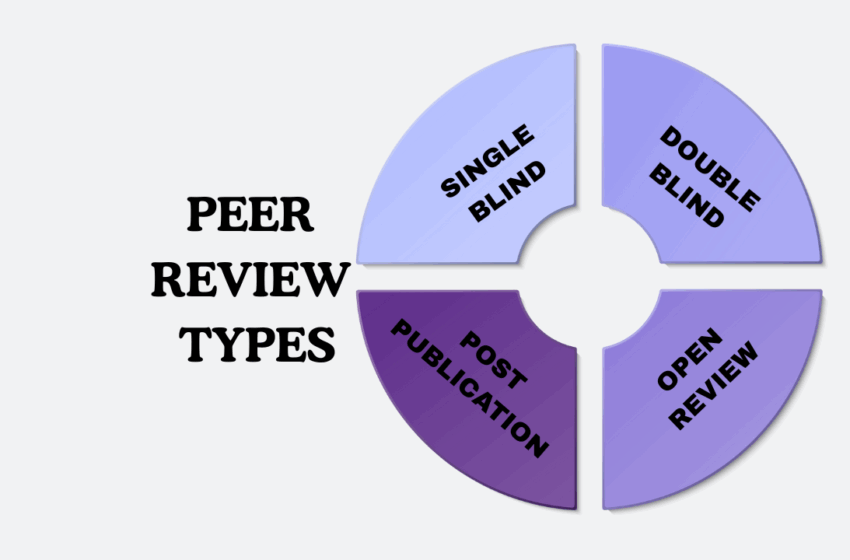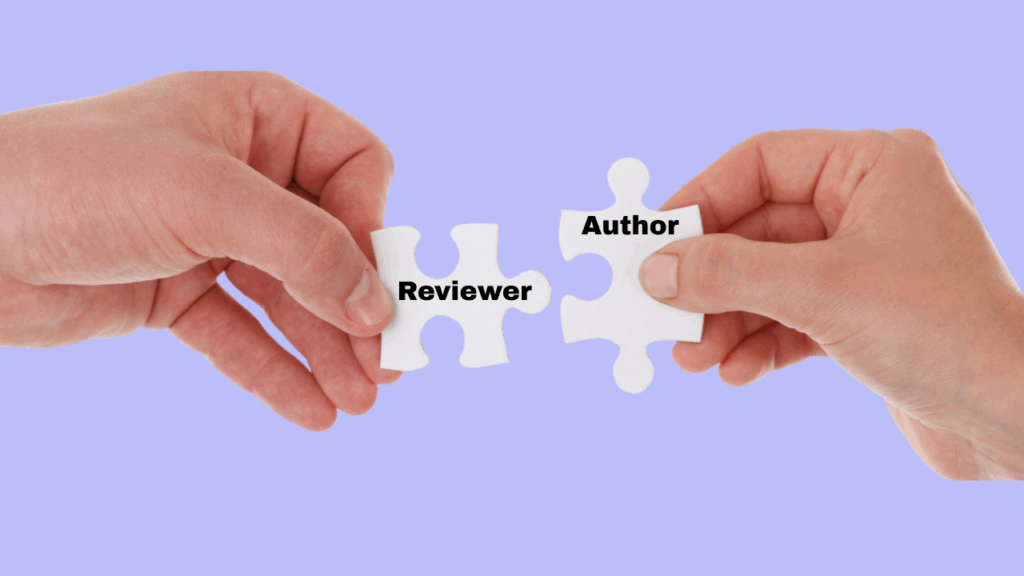Single-Blind vs. Double-Blind vs. Open Peer Review: Which Works Best?

Peer review is a crucial quality control mechanism in academic publishing that helps refine research papers to ensure they meet high academic standards before being shared with the scientific community. This constantly evolving process has multiple models, the popular ones being the single-blind and double-blind peer review processes. To make an informed decision on which model suits best for your paper, you need to consider the pros and cons of each peer review model and whether your target journal implements that model.
Types of Peer Review
Peer review can be classified into four major types:
1. Single-blind (single-anonymized) peer review
2. Double-blind (double-anonymized) peer review
4. Post-publication peer review
Single-Blind Peer Review
Definition
In the single-blind peer review process, reviewers know the identity of the author, but the author does not know who the reviewers are. This allows reviewers to provide unbiased feedback without fear of retaliation from the author.
Process
- Manuscript submission: The author submits a research paper to a journal with their name and affiliation disclosed.
- Editorial screening: The journal editor checks if the paper meets the journal’s scope and quality standards.
- Reviewer assignment: The editor selects expert reviewers to assess the paper.
- Review process: Reviewers, while remaining anonymous, evaluate the paper’s validity, methodology, and impact.
- Feedback and decision: The journal editor receive feedback and comments from reviewers and decides the next steps (accept, revise, or reject).
- Author revisions: If revisions are needed, the author updates the paper and resubmits the manuscript.
- Final decision: The editor makes a final decision based on reviewer feedback.
| Advantages | Disadvantages |
| Helps maintain traditional peer review standards. | Reviewers may be biased based on the author’s name, institution, or reputation and provide a more critical review for an article written by a perceived rival. They may also be unconscious bias, wherein reviewers judge the paper based on author’s details without even realizing it. |
| Reduces author influence as authors do not know the identity of reviewers and hence cannot pressure or influence them. | The lack of transparency does not give the authors a chance to assess potential conflicts of interest. |
| Ensures honest feedback because reviewers assess manuscripts critically without fear of backlash from authors. | Although unlikely, a few reviewers may exploit their anonymity, providing rude or unfair reviews. |
Double-Blind Peer Review
Definition
Double-blind peer review is a process in which the author and reviewers remain anonymous to each other. This ensures that the evaluation is based purely on the quality of the research, reducing potential biases related to the author’s identity, institution, or reputation.
Process
- Manuscript submission: The author submits a research paper, ensuring that no identifying information is included in the manuscript.
- Editorial screening: The editor checks if the paper fits the journal’s scope and removes any identifying details if necessary.
- Reviewer assignment: The editor selects expert reviewers, who receive the anonymized paper.
- Review process: Reviewers assess the paper’s methodology, findings, and contribution without knowing the author’s identity.
- Feedback and decision: Reviewers provide constructive criticism and recommend acceptance, revision, or rejection of the manuscript.
- Author revisions: If required, the author makes revisions based on feedback and resubmits the paper.
- Final decision: The editor makes a final decision based on the revised submission and reviewer feedback.
| Advantages | Disadvantages |
| Minimizes the risk of bias by preventing reviewers from being influenced by the author’s identity, institution, or background. | It may be difficult to ensure complete anonymity. For instance, reviewers may guess the author’s identity based on the writing style, references, or research topic. |
| Ensures a fair evaluation as the assessment focuses on the quality of research rather than the author’s reputation. | Editors must put in additional effort to ensure anonymity and remove identifying details, which may delay the review process. |
| It helps early-career researchers receive fair evaluations without any bias toward prestigious institutions. | Since reviewers remain anonymous, they may provide vague or overly critical feedback without consequences. |
Open Peer Review
Definition
In the open peer review model, both the author and reviewers know each other’s identities. In some cases, review reports may also be published alongside the final paper, increasing transparency and accountability in the evaluation process.
Process
- Manuscript submission: The author submits their research paper to a journal that follows open peer review.
- Editorial screening: The editor ensures the paper meets the journal’s standards before sending it for review.
- Reviewer assignment: The editor selects experts, and both the author and reviewers are aware of each other’s identities.
- Review process: Reviewers assess the paper’s quality, validity, and significance while providing signed feedback.
- Feedback and decision: Reviewers provide constructive comments, and their reports may be published along with the article.
- Author revisions: The author revises the paper based on feedback and resubmits it for further review.
- Final decision and publication: The editor makes the final decision. If accepted, the paper is published—often with reviewer comments included.
| Advantages | Disadvantages |
| Both authors and readers can see who reviewed the paper, reducing hidden biases and promoting transparency. | Some reviewers may be reluctant to provide critical feedback, fearing backlash from authors. |
| Reviewers are more accountable for their comments, leading to higher-quality reviews and constructive feedback. | Reviewers may be influenced by the author’s reputation, leading to biased evaluations. |
| Reviewers receive public recognition for their work, which can be beneficial for career development. | The process can take longer as reviewers may spend more time crafting well-reasoned critiques because of public visibility. |
| Because the identities of reviewers are known, they are less likely to provide overly harsh or unprofessional feedback, thereby reducing unfair criticism. | Not all researchers or journals are comfortable with complete transparency, limiting the widespread use of this model. |
Post-Publication Peer Review
Definition
Post-publication peer review is a unique model, wherein your research paper is published first and then evaluated by the scientific community. Your manuscript may still undergo one of the traditional peer review processes before publication, or it may be published online almost immediately after submission. Either way, the research will be subject to ongoing critique, discussion, and improvement after it becomes publicly available.
Process
- Manuscript submission and publication: The author submits a paper, and it is published with minimal pre-publication review or without any review.
- Community review: Researchers, experts, and readers publicly or privately review and comment on the paper.
- Feedback and discussion: The paper is evaluated over time, with critiques, endorsements, or debates shaping its credibility.
- Corrections and revisions: Authors can update or retract their paper based on valid criticisms.
- Long-term validation: The scientific impact of the paper is determined by ongoing discussions, citations, and replication studies.
| Advantages | Disadvantages |
| Unlike traditional peer review, this model allows innovative or controversial ideas to be discussed without being blocked by a small group of reviewers. | Without rigorous pre-publication review, flawed or misleading studies may be published, increasing the risk of misinformation being disseminated. |
| Research is shared with the public shortly after submission, accelerating knowledge dissemination. | The quality of assessment may vary because all papers do not receive the same level of scrutiny. |
| Papers are continuously evaluated, reducing the risk of flawed research going unchallenged. | If major flaws are exposed after publication, it can damage the author’s credibility and reputation. |
| Encourages broader input from a larger community rather than relying on a few selected reviewers, facilitating open scientific debates. | As seen in online comment sections, public critiques in the scientific world can sometimes be harsh, biased, or unprofessional. |
Single-Blind vs. Double-Blind vs. Open Peer Review
Since most journals follow single-blind, double-blind, or open peer review processes, the table below provides a comparative analysis of these models.
| Single-blind peer review | Double-blind peer review | Open peer review | |
| Process | Reviewers’ identities are hidden from the author, but the author’s information is disclosed to the reviewers. | Both authors and reviewers remain unaware of each other’s identities. | The identities of both the author and reviewers are known to each other. |
| Major advantages |
|
|
|
| Major disadvantages |
|
|
|
Conclusion
Irrespective of the method adopted, the peer review process functions as a screening mechanism to weed out bad science and to help authors improve the quality of their research. Now that you have a better understanding of the different types of peer review, which of these types of peer review would you prefer for your own manuscript?
You may also be interested in checking out these tips on responding to peer reviewers’ comments.
Want to know if your paper is ready for peer review? Get your manuscript evaluated by expert reviewers using our Pre-Submission Peer Review Service.
Originally published on November 11, 2014. Revised on September 29, 2025






